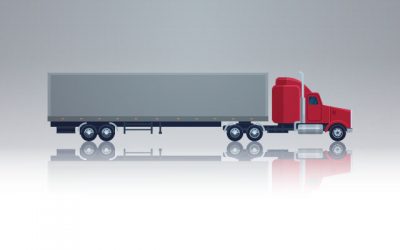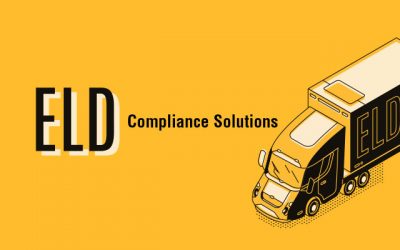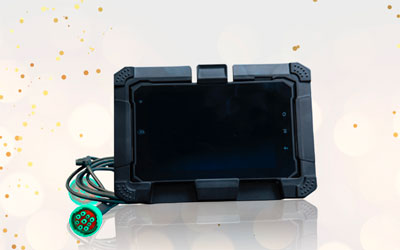ELD Mandate in 2020
2020 is the first official year of the FMCSA‘s mandate that requires commercial motor vehicle to use Electronic Logging Device (ELD). The fleet industry met a major milestone in December 2019 by complying with the directions of the Federal Motor Carrier Safety Administration (FMCSA) ELD Mandate but what is next for 2020 must be a question in everyone’s mind.
The ELD mandate was formulated to ensure that the fleets produce driver records for the Department of Transportation (DOT). It was important to shed some work of the drivers by eliminating the manual filing of driving records and helping the drivers to improve their efficiency alongside keeping them safe.
It is important for the fleet companies to comply with the regulations and adopt a fleet management device – ELD – to avoid any consequences of non-compliance.
WHAT IS THE ELD RULE?
ELD mandate makes it mandatory for fleet owners to equip their vehicles with an ELD to record the duty hours, which aims to cut down on driver fatigue to reduce road accidents. The FMCSA has certain rules and regulations for the Hours of Service (HOS) that limits the number of hours a driver can drive in a single day. ELD rule makes it mandatory for fleet owners to equip their vehicles with an electronic logging device to record the duty hours, which aims to cut down on driver fatigue to reduce road accidents
WHY THE ELD RULE IS IMPORTANT?
ELD helps drivers to follow the legal limit and help in analysing the vehicle, driving pattern and track the location of the vehicle and drivers and help in keeping the drivers safe. It is believed that driver fatigue is one of the major reasons for road accidents. As per the mandate, most of the commercial motor vehicles need to have an ELD to keep track of the duty hours and analyses the driving pattern of the drivers. FMCSA strongly believes that this will help in creating a safe environment for drivers and it will reduce their load.
FMCSA has laid out guidelines for your ELDs
- Use of telematics technology: Telematics technology enables electronic transmission of data to the authorized officials. In case of any compliance related investigation, the data must be accessed by authorized officials.
- Automated Entries: All ELD compliant devices should have tracking and recording features. It should enable automated recording of driver’s behavior, engine diagnostic data, unsafe driving pattern etc. These features will help in managing any fleet efficiently.
- Duty Status Graph for drivers: ELD must have a display for driver’s activities which must include information about driver’s activity like driver is on-duty or off-duty, driving or idling etc.
- Edits and adding remarks: ELD device should have edit option and for adding any remarks by the drivers. However, this should not overwrite the including notes but it should store the edited version.
- Engine Diagnostic Data: ELDs should be able to detect any issue with vehicle engine and push alerts to the drivers. It should be able to automatically detect any system malfunctions, tracking, data synchronization etc.
THE UNITED STATES ELD RULE:
In 2012, the Congress enacted the “Moving Ahead for Progress in 21st Century” bill or commonly referred to as MAP-21. The ELD final rule is a part of MAP-21, which went into effect in 2017. The rule was passed in a bid to ensure the safety of drivers by creating a safe environment and making it easier to track and manage their duty records.
It rules the fleet owners to equip their vehicles with ELD in a bid to reduce the paperwork of drivers to log Hours of Services (HOS) and reduce road accidents.
Federal Motor Carrier Safety Administration (FMCSA) had set a deadline of December 16, 2019, for fleet owners to comply with the rules.
FACTS TO LEARN ABOUT THE US ELD RULE:
- ELD regulations rule the drivers to use the device to log their Hours of Services (HOS) as per the legal limit
- Cut down on paperwork and improve efficiency
- Reduce driver fatigue, which leads to road accidents
- Aims to save billions of dollars by reducing paperwork
- Fleet owners can track the location of the vehicle and drivers
Data Transfer to Enforcement:
The US ELD mandate requires the vehicles to send a detailed report of eight-day log data to enforcement
Location Data Sources:
As per US ELD mandate, manufacturers are supposed to get the location of events like yard moves, personal conveyance, duty status, unassigned vehicle moves etc
Personal Conveyance:
The US ELD mandate doesn’t have any time or distance restrictions when it comes to personal conveyance.
Third Party Certification:
The US ELD mandate doesn’t make it mandatory for the ELD suppliers to get third party certification
Data Collection:
ELDs will collect the data and generate a log of Hours of Services (HOS) automatically along with other information about the vehicle, location, driving pattern etc.
Notifications:
ELDs are required to generate automatic alerts in case of vehicle malfunction or unassigned driving time.
Information Sharing:
The reports generated are in a standardized format for clarity during inspections by law enforcement officers.
Exemptions made by the US ELD rule:
As per the FMCSA, three groups are exempted from using ELDs.
- Drivers who use paper logs for 8 days during a 30-day period
- Driveaway-towaway drivers
- Drivers of vehicles manufactured before 2000
THE FMCSA HAS ALSO EXTENDED THE DEADLINE FOR CERTAIN COMPANIES:
- The United Parcel Service, October 2022
- Motion Picture Association of America, January 2023
- Truck Renting and Leasing Association, October 2022
What’s new for 2020?
In 2020, the primary focus of FMCSA’s ELD mandate is to ensure complete enforcement and full compliance. The transition from manual filing to ELDs in past five years has been gradual but the commercial motor vehicles have adapted to the changing regulations of the fleet industry.
ELD in 2020 is all about enforcement. It is important for the fleet companies to adapt to the changing regulations of the industry in a bid to move forward and avoid the harsh consequences of non-compliance which can vary from hefty fines to out of service orders for drivers to low CSA scores.



